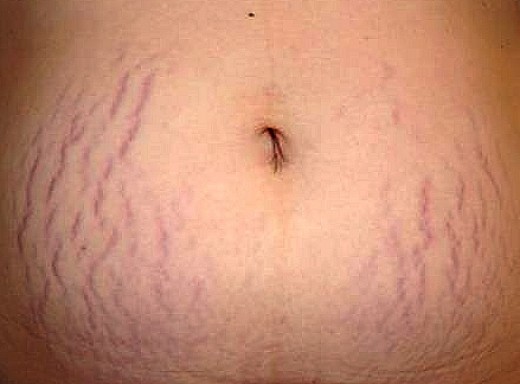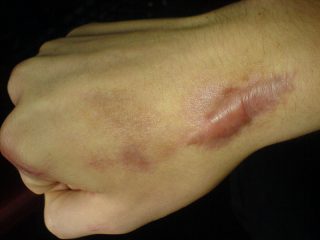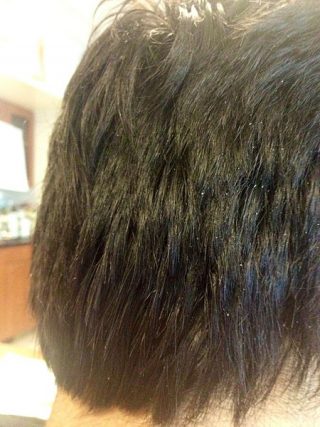Why do stretch marks occur on the body?
When it comes to stretch marks, we are all potentially threatened.
Stretch marks are atrophic scars, characterized by lack of elastic fibers. It is estimated that stretch marks prevalence ranges from 50 to 80%.
Initially, when they are at an early stage of their development, they have a pink or purple color that fades to silver or white over time.
The main reasons for their appearance are related to the elasticity of the skin and the blood circulation. Most often they result from excessive stretching of the dermis and epidermis and various disorders in the synthesis of elastin and collagen (the structural components of the skin).
The skin cannot withstand the combination of drastic stretching and loss of elastic tissue, which makes it thinner and leads to cracking in the deepest layers of collagen and elastin, and is expressed in the lines forming on the upper layer of the skin.
Such formations most often appear on the thighs, buttocks, abdomen, and chest, but can also be found elsewhere on the body. They are usually red, and then become silver-colored. When the abdomen is affected, these formations are in the form of radius (forming a circle) whose center is just below the navel. Sometimes, if they form below the navel, they are in the form of a folding fan just above the private area. If stretch marks affect the breasts, they form a ‘radius’ with a center the areola and on the hips, these formations are inclined lines.
These scar types (which also affect men, but less often) appear imperceptible, without causing any pain, and one can notice them when they become obvious. It is therefore very important to prevent them from occurring by providing the skin with all the substances it needs to keep the binding threads elastic.
Puberty and the appearance of stretch marks
This is the time when the hormone changes in the body are exposed to conditions favorable to the occurrence of stretch marks. On the other hand, this is the exact stage of life, human weight dramatically increases. It is very important for teenage girls to take timely measures in order to prevent stretch marks development by maintaining normal weight and treating locally the potentially “dangerous” areas.
Pregnancy and stretch marks
This is the most dangerous stage of women’s lives because of the rapid growth of the abdomen. There is a large number of pregnant women who develop stretch marks between the fourth and sixth month of pregnancy.
The future mother usually notices them when the damage is already visible – fine stretch marks occurring on the skin, which is stretched and shining in these particular areas. After the delivery, the scar formations change their appearance. In the beginning, stretch marks are pink or red in color, then they appear whitish and purplish, but they are still visible at first glance.
In a subsequent pregnancy, stretch marks can become a serious aesthetic problem.
Each time you gain weight, there is a risk of developing stretch marks
With any dramatic increase of the pounds, there is the potential risk for stretch marks development. Undoubtedly, the faster this happens, the more easily the collagen and elastic fibers are damaged.
And here’s the paradox – you can also get stretch marks while you are losing weight. According to some specialists, stretch marks, which are due to weight loss and those, following a weight gain differ morphologically. The truth is that the appearance of both types is accompanied by the same visible factor,
Stretch marks on the thighs
The thighs can be affected during the first years of puberty. Young women can develop stretch marks on their thighs during their early adolescence (9-13 years of age). This happens due to the fast physical growth and collagen disruption (the skin cannot produce enough collagen, while it is excessively stretched).
Thighs on the thighs is a condition that occurs with excessive weight gain, where the skin cannot handle and there is a break in the fibers just beneath the surface of the skin, resulting in stretch marks.
Causes of stretch marks on the thighs may be overweight, pregnancy, Ehlers-Danols syndrome, Marfan syndrome, Cushing’s syndrome, alcohol-induced Pseudo-Cushing syndrome, steroid therapy, lichen planus, etc.
Stretch marks originally appear as red-purple lines on the skin that gradually fade and become whitish. Streaks are located on the abdomen, chest, upper arms, etc.
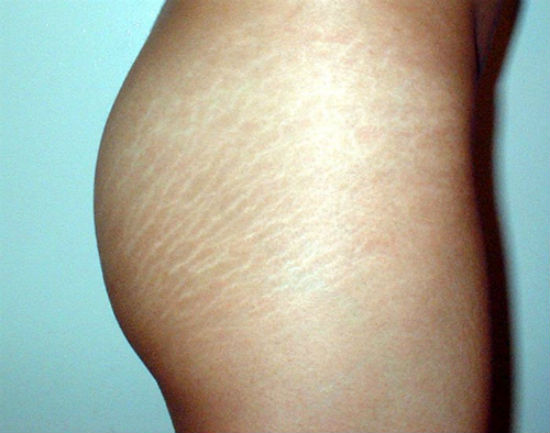
Stretch marks on the shoulders
Bodybuilders, especially men, often get stretch marks on their arms (biceps) and shoulders, because usually a large muscle tissue is formed (the process is often very rapid) stretching the skin.
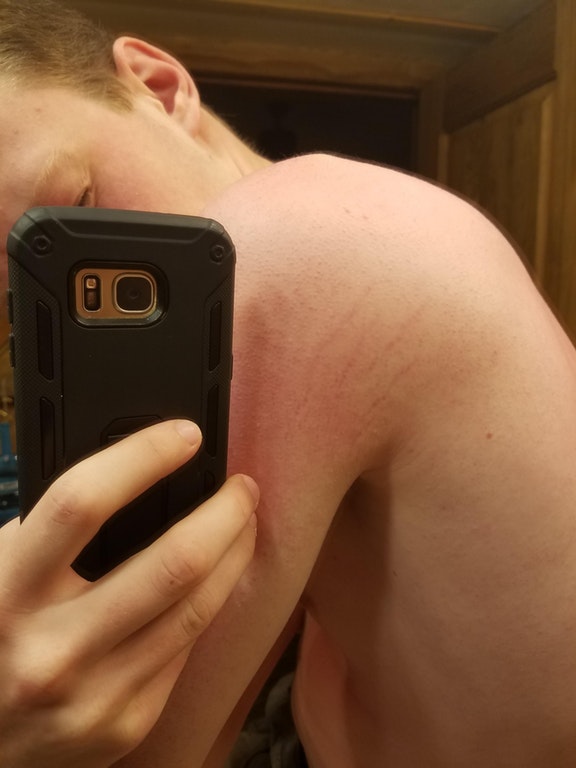
Stretch marks on breasts
The occurrence of stretch marks on the breasts is very important for most women. Sudden weight change, pregnancy, breastfeeding – these are the most common factors for their development.
These stretch marks vary in size and width, forming in the areas where the skin was drastically stretched. They may be purple, pink or whitish in color. They usually form during puberty (when breasts increase in sizes) or during pregnancy (for the same reason).

Stretch marks on belly
Тhis cosmetic problem occurs during or after pregnancy (usually, in the last trimester), with a sudden decrease in weight, dieting, and gaining weight. Over time, stretch marks of the abdomen become pale, but they are a very unpleasant and persistent problem, causing emotional and psychological distress for many women.
The striae, caused by pregnancy is due to the skin on the abdomen, which is rapidly expanding to accommodate a growing baby.
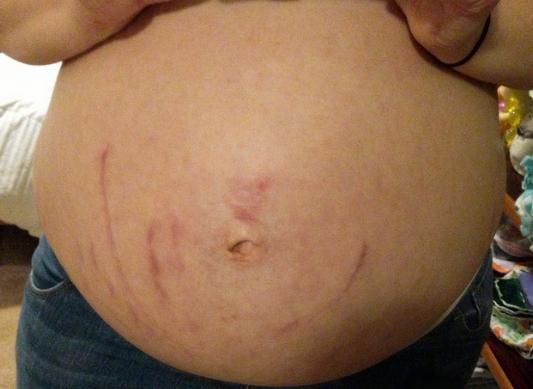
Stretch marks on the back
These stretch marks usually form, following the rapid growth during puberty, drastic weight changes, excessive stretching. Another reason may be a low collagen output, following corticosteroid fix.
However, they can also appear as symptoms of the following cosmetic conditions:
- Cushing’s syndrome,
- Persistent exposure to stress
- Marfan syndrome
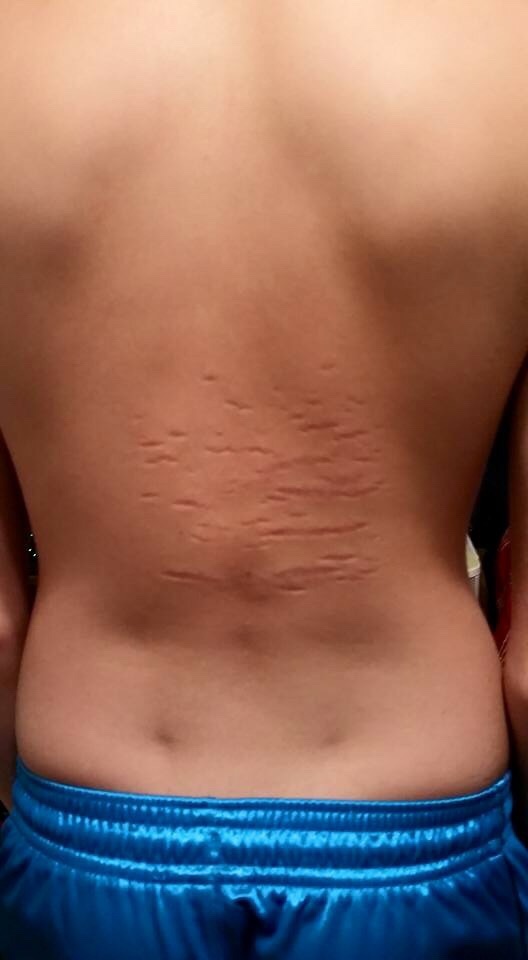
Why stretch marks can appear during pregnancy
During the pregnancy period, there are huge changes in the body and, unfortunately, most of them are out of your control. Hormones and babies need capture your appearance, weight, and emotions. One of the common “effects” of pregnancy is the occurrence of stretch marks that make many women feel less attractive.
Stretch marks usually appear after the sixth month of pregnancy when the baby begins to increase in size intensively for a short time. In order to provide the necessary space for its development, the skin is stretched, with the elastic fibers directly in it being the main role. In the places where this occurs, red or purple lines appear, then gradually fade (after the delivery). Typically, untreated stretch marks disappear on their own or change in color to gray or silver-white. They cannot completely disappear, but can become almost invisible after a certain period of time, accompanied by an adequate and timely fix method,
Stretch marks occur most commonly in the abdomen and chest area (where stretching is the most excessive), but other parts of the body such as the buttocks and thighs may be affected as well (weight gain is a typical pregnancy indication). Whether you will get stretch marks and where exactly, to a great extent, depends on your skin elasticity, weight, hormonal changes and genetic factors. If your mother has received stretch marks during her pregnancy, it is likely that you will also get it.
In fact, the stretch marks affect almost 90% of women after pregnancy. And while some women are proud of them and perceive them as “war-wounds,” others invest considerable money and time to get rid of them.
Prevention
The best way to reduce the likelihood of getting stretch marks is by maintaining a skincare weight. Fast and drastic weight changes through aggressive diets are not only a serious prerequisite, but are, in most cases, unskincare.
During pregnancy, it is inevitable to gain weight in a short period of time, but there is still some way to control it to some extent through diet and exercise. This will not only reduce the chance of stretch marks but will also be skincare for the pregnant woman and her baby.
We have the best creams for stretch marks prevention here.
Prevention method # 1. Skin hydration
One of the main reasons for the appearance of stretch marks is dry skin or dehydration. Drinking enough water can improve elasticity and have a beneficial effect on the skin. It depends on the individual, but the minimum daily water intake should be more than 2 L.
Prevention method # 2. Shea or cocoa butter
Another predisposing factor for the appearance of stretch marks is the lack of collagen and elastin, which are essential elements supporting the skin structure. It is possible that cocoa butter with vitamin E and elastin or shea butter can help prevent stretch marks occurrence, but a number of studies prove that they do not have any particular effect on stretch marks that have already developed (link to the clinical study).
Prevention method # 3. Vitamins and minerals
Vitamin A
Important for the growth of the skin, maintaining skincare bones, nails and hair. Helps restore damaged tissue and improves dry and scaly skin. Experiments show that the application of vitamin A locally supports the epidermal tissue and improves its elasticity.
Vitamin A also stimulates the process of epidermal cell renewal. The content of collagen in the skin increases and an improvement in elasticity can be observed.
Vitamin A-rich foods: sweet potato, carrot, cabbage, lettuce, apricots, melon, sweet red peppers, tuna, mango.
Vitamin C
One of the most important roles of vitamin C is that it helps to heal wounds and scars. It is needed for the synthesis of collagen and acts as a strengthening substance between the skin cells. The action of collagen is to provide a barrier against infections and problems and promote wound healing.
Foods rich in vitamin C: yellow peppers, dark green leafy vegetables, kiwi, broccoli, strawberries, oranges, tomatoes, peas, papaya, guava.
Vitamin E
Another important vitamin in the fix of stretch marks. It is necessary to maintain normal metabolism. Protects and heals the tissues of the body and skin. It acts as a powerful antioxidant. It is also used to support healing processes after procedure and scarring.
Vitamin E-rich foods: spinach, almonds, sunflower seeds, avocado, shrimp, olive oil, broccoli, kiwi.
Zinc
An important effect of zinc is that it helps to produce collagen. It has the property of keeping the skin tissues of the body together. Collagen is the most abundant structural protein and constitutes 80% of all connective tissue.
Zinc-rich foods: oysters, veal and lamb, chicken and pork, wheat germ, spinach, cashew, pumpkin seeds, chickpea










Last update on 2024-04-14 / Affiliate links / Images from Amazon Product Advertising API
